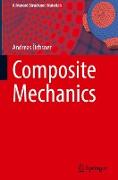Composite Mechanics
BücherAngebote / Angebote:
This book in the advanced structured materials series provides first an introduction to the mircomechanics of fiber-reinforced laminae, which deals with the prediction of the macroscopic mechanical lamina properties based on the mechanical properties of the constituents, i.e., fibers and matrix. Composite materials, especially fiber-reinforced composites, are gaining increasing importance since they can overcome the limits of many structures based on classical metals. Particularly, the combination of a matrix with fibers provides far better properties than the constituents alone. Despite their importance, many engineering degree programs do not treat the mechanical behavior of this class of advanced structured materials in detail, at least on the bachelor¿s degree level. Thus, some engineers are not able to thoroughly apply and introduce these modern engineering materials in their design process.
The second part of this book provides a systematic and thorough introduction to the classical laminate theory based on the theory for plane elasticity elements and classical (shear-rigid) plate elements. The focus is on unidirectional lamina which can be described based on orthotropic constitutive equations and their composition to layered laminates. In addition to the elastic behavior, failure is investigated based on the maximum stress, maximum strain, Tsai-Hill, and the Tsai-Wu criteria. The introduced classical laminate theory provides a simplified stress analysis, and a subsequent failure analysis, without the solution of the system of coupled differential equations for the unknown displacements in the three coordinate directions.
The book concludes with a short introduction to a calculation program, the so-called Composite Laminate Analysis Tool (CLAT), which allows the application of the classical laminate based on a sophisticated Python script.
Folgt in ca. 15 Arbeitstagen

